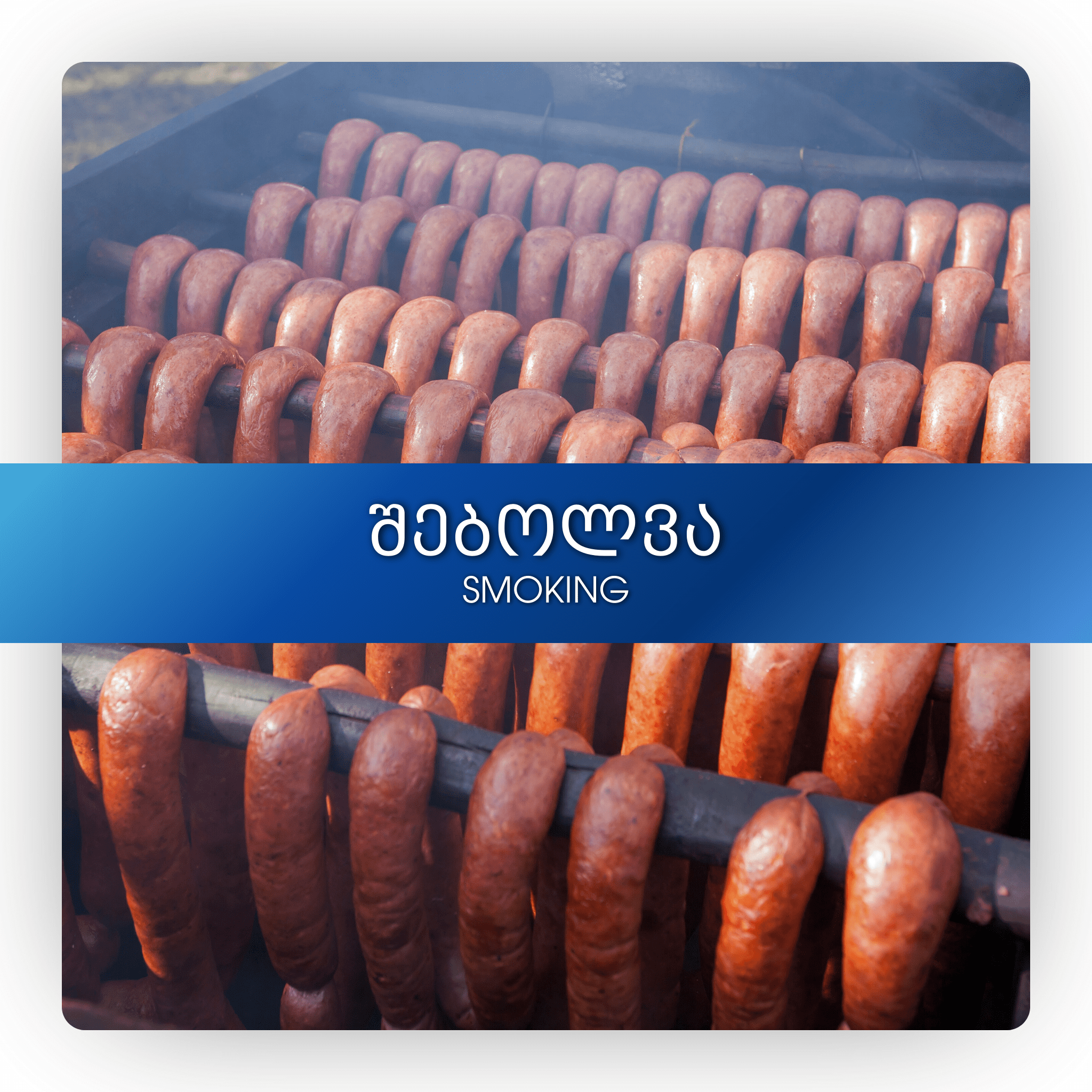Smoking
Smoking is one of the methods of preservation. It consists in the combined effect of drying, salting, heating and the antiseptic effect of smoke on food products. In the first case, a rather high concentration of salt has a priority preserving value, and in the second, a high temperature during the smoke treatment.
Smoking is not only a means of preservation; It also strengthens and improves the taste and aroma of the product. The substances included in the composition of the bottle (methyl alcohol, formaldehyde, furfurol) have a bactericidal effect. Many organic acids (acetic, propionic, erboic, valerian, formic), acetone and other ketones, phenols and their methyl esters and other combustion products contained in bole have a negative effect on the human body, in particular, they are carcinogenic.
Because of this, instead of smoking processes, different smoking preparations are used, which act on the product in a similar way to smoking. These preparations are divided into two groups: preparations for treating the surface of the product and preparations for adding to the mass of the product. The smoking preparation "Vakhtoli" is used to treat the surface of sausage, nadnobi cheese and fish products. The fish is placed in a 5% solution of "Vakhtoli" and left for 6 hours. During hot smoking, 2.5-5% "Vakhtoli", and during cold smoking, 10% steam enters the smoking chamber (based on the weight of the fish).
The smoking preparation developed by the All-Union Semi-Scientific-Research Institute of the Meat Industry - "Khmsski" - is added to sausage mince in an amount of no more than 1.5-7 ml/kg, and in cheese - no more than 6 ml/kg.
To treat the surface of smoked fish products, a smoking preparation created at the Moscow Institute of Public Economy - "SMMI" is used.
The initial signs of spoilage of food products, especially fish, can be easily eliminated by means of smoking, so great attention should be paid to the quality control of the initial raw materials in the production of smoked products.
Smoke liquids are, to some extent, purified products of cellulose pyrolysis. Products made in this way have been studied quite well from a toxicological point of view. Smoke solutions contain such mutagenic compounds as phenols, formaldehyde, acetic acid, etc. Therefore, additional studies were conducted to study the mutagenic activity of smoking preparations.
Research has confirmed that "Khmsski" does not have this effect, while in some experiments the mutagenic activity of large doses of "Vakhtoli" was revealed. Therefore, according to the Joint Committee of FAO/WHO Experts on Food Additives, it is recommended to limit its use in the food industry.
